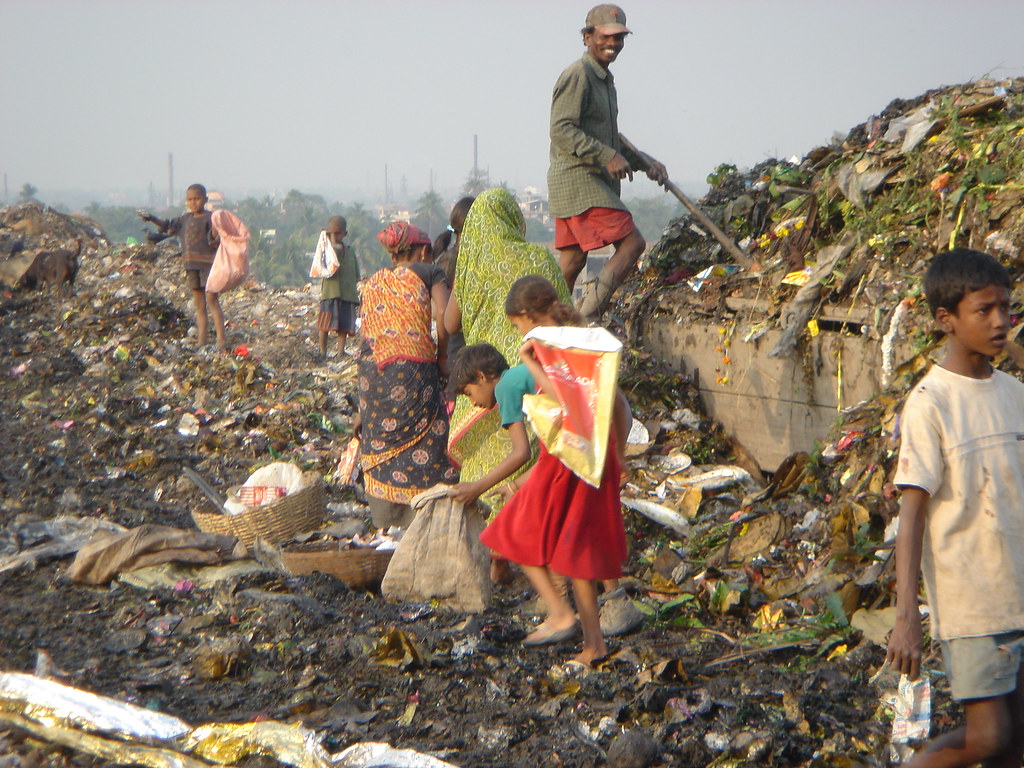
Image Source: Wikimedia Commons
In response to a question in the Parliament last month, the Union Minister for Social Welfare stated that 321 persons died in the last five years due to accidents while undertaking hazardous cleaning of sewers and septic tanks. He further stated that no deaths due to manual scavenging had been reported. The figure for no deaths is decidedly underreported and may be hidden within figures for hazardous cleaning given the number of people actually engaged in manual scavenging and the hazardous working conditions associated with it.
Manual scavenging has been banned since 1993 under the Prohibition of Employment as Manual Scavengers and their Rehabilitation Act (“PEMSRA”). However, the State has done little to implement it. The practice of manual scavenging continues across the country, disguised as hazardous cleaning, as permitted by loopholes in PEMSRA.
PEMSRA was amended in 2013 to distinguish between manual scavenging and hazardous cleaning. The Act also created conditional permissibility for manual scavenging. Section 2(g) of the Act defines a manual scavenger as a person employed to clean, carry, dispose of, or otherwise handle human excreta in an “insanitary latrine or in an open drain or pit”, railway tracks and other premises. But Section 2(g)(b) states that a worker “employed to clean excreta with the help of such devices and using such protective gear” as notified by the government will not be deemed as a manual scavenger.
Similarly, Section 2(d) defines ‘hazardous cleaning’ as the manual cleaning of “sewer and septic tank … without the employer fulfilling his obligations to provide protective gear and other cleaning devices and ensuring observance of safety precautions”. Hence, it permits manual cleaning of sewers and septic tanks if the worker is equipped with protective gear and follows safety precautions.
In reality, private contractors disregard the condition for protective equipment and standard operating procedures. When CLPR held a legal awareness seminar for persons engaged in manual scavenging in Champapet, Hyderabad, most of the 130 attendees were unaware that the law required them to be given any of the 44 kinds of protective gear and 19 kinds of cleaning devices mentioned in the PEMSRA Rules. Hence, the hazardous conditions associated with manual scavenging have persisted.
Such conditions often result in injuries and deaths of the workers. Most deaths take place in septic tanks and sewers which are deeper than open drains and pits. Cleaning sewers and septic tanks is not markedly different from cleaning an open drain and often involves handling human excreta. Although Section 2(d) describes it as hazardous cleaning, the workers, in fact, perform the job of manual scavenging in sewers and septic tanks. By corollary, their deaths are also registered as ‘accidents while hazardous cleaning’.
To push the argument further, it can be said that deaths under hazardous cleaning may also be underreported as official data on the issue of manual scavenging has been flagrantly misleading in the past. The statement in question states that 58,098 manual scavengers have been identified across the country. Unofficial sources such as Safai Karamchari Andolan, an organisation working to eliminate the practice of manual scavenging, place the figure at 7,70,000, with 36,176 persons engaged in manual scavenging in railway stations alone.
Sheer neglect by most state governments to carry out the identification surveys of persons in manual scavenging, as directed by Chapter IV of PEMSRA, explains the low figures. In case of Karnataka, it was only after the High Court directed the government to conduct the survey, in a petition being heard for the implementation of the PEMSRA, that the state government began the work of identification. So far, the said survey has covered 12 districts. 5,080 manual scavengers have already been identified, which far exceeds the official figure of 2927 for the entire state.
Thus, the actual figures of persons engaged in manual scavenging and the pervasiveness of hazardous working conditions negate the officials’ claims of no deaths. The real figures hide within ‘accidents due to hazardous cleaning’ due to the wide room for interpretation given by the Act. The State has read the legislative descriptions at face value in deeming who is a manual scavenger and what counts as manual scavenging, which is nothing but an exercise to hide its own failings to implement the Act.

